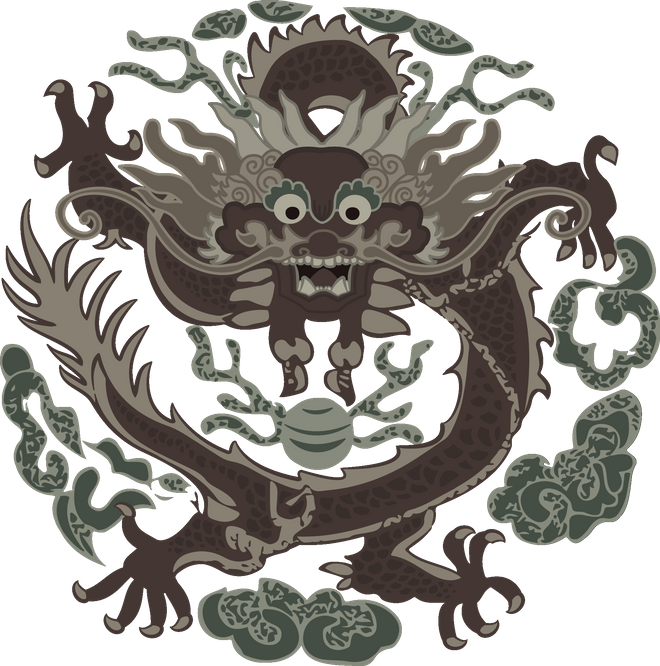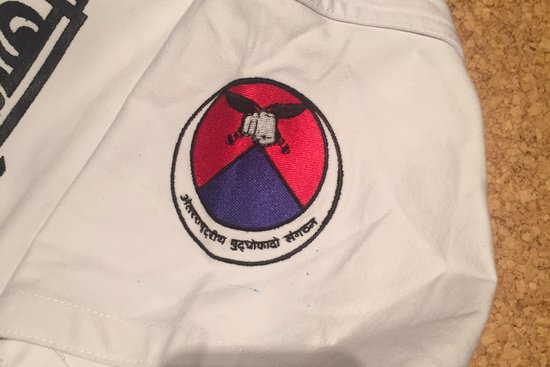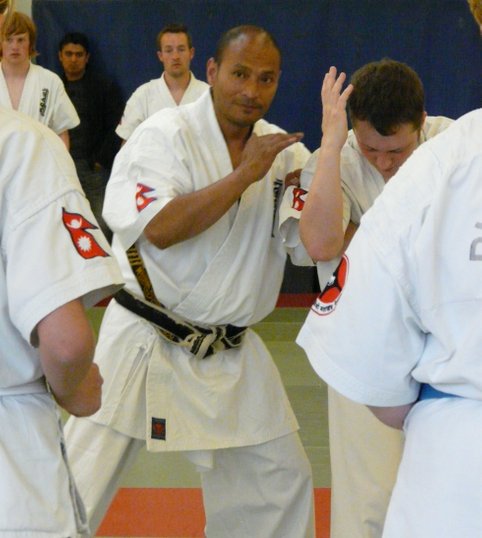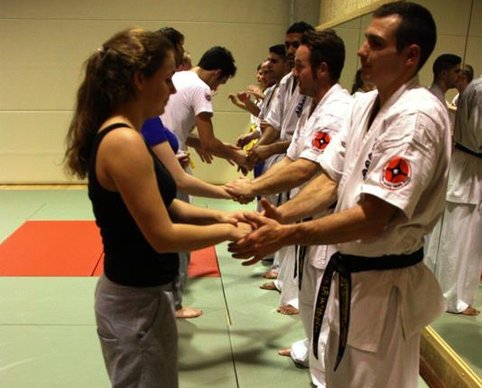BUDDHAKADO BELGIUM
ABOUT US
What is Buddhakado?
BUDDHAKADO is a dynamic full contact style...
Buddhakado is an allround full contact style developed in Nepal and introduced to the rest of the world from Knokke-Heist in Belgium by Maha Guru.
Buddhakado is a martial style adapted to cope with real life situations, increasing speed, accurate delivery of kicks and blows, whilst at the same time improving confidence, concentration and inner strength.
A style that, due to its allround system, is a realistic defensive martial art with techniques that work. Using walking stance as fighting position ensures maximum mobility.
Developed & perfected to avoid head-on confrontations, focusing more on ducking, avoiding, striking from the side & back and moving in circles and half circles.
In Buddhakado, the goal is to use the opponent's blind spot to maximize the effectiveness of our techniques.
It covers close combat, groundfight, self-defence, competition, breaking techniques and more...
The aim of the teachings of Buddhakado is to enable anyone, big, small, strong or weak, to defend themselves with a teaching method that allows intensive training without injuries.
Progression
Unlike many martial arts, Buddhakado keeps evolving over the years.
This way the techniques remain effective and new movements can be incorporated.
The training teaches effective self-defence techniques as fast as possible. It includes partner training, training with kick bags, locks, strangleholds etc.
Teaching efficient methods in fighting stance, learning to move swiftly and adequately, which encourages the student and leads him to calm confidence.
Grading
As most of the eastern martial arts, there is a system of grading.
Here is an overview of the different colours of belts (peti)
And also, the different grading once black belt has been obtained
Greeting (Namaste)
Placing hands against eachother with elbows in a straight line, we greet by saying Namaste.
We do this when seeing a fellow Buddhakado-dai, when stepping on the mat, when a Guru steps in the room and when finalizing the lesson.
Start lesson:
- Greeting to Buddha.
- Greeting to all Gurus that have a relation with the specific kelne thau (dojo/club), present or not.
End lesson:
- Again greeting to Buddha.
- Greeting to present Gurus.
And finalize by shaking hands (double > respectfully), saying dhanyabad (thank you > for the training) to all.
.
History
In the beginning of the 90s, our founder (Maha Guru) came to Belgium and started teaching a Nepali Full Contact Karate style known in Nepal as Buddhakado.
Since the Japanese martial arts were already settled in Europe, Maha Guru thought it would be easier for people to adapt if everything was taught in Japanese. Because of that, the name Buddhakado was changed and was known as Budokai-do (2015).
Budokai-do / Buddhakado has always strived to be an adaptive martial style. In 2002 it was really able to better represent itself within the Full Contact Karate world as a Nepali style when it changed all Japanese terminology into Nepali.
The last and final step waiting to happen was to change back to the original name of the style, Buddhakado.
Now, since 2016 we are complete!
Methodology
The tactic of Buddhakado consists of avoiding the attacks of the opponent, bringing him out of balance and eliminating him as fast as possible, thus giving him no chance.
The fighting symbolism is also expressed in the Kandu with:
- The moon standing for fighting in half circles
- The sun for fighting in full circles.
- The great Mount everest, the highest mountain in the Himalaya, symbolizing line of sight, but also representing the limits you set yourself.
- And the fist which is you, not in the line of sight of your attacker.
Symbol
Kandu: International Buddhakado Organisation's logo.
Made in the colours of the Nepali flag
- Red: the colour of the rhododendron, the country's national flower. Red is also the sign of victory in war.
- Blue: the colour of peace.
- White: the flag's emblems, the sun and the crescent moon
Representing the following:
- White half circle > moon > stands for fighting in half circles.
- Red full circle > sun > stands for fighting in full circles.
- Blue > Mount Everest > the highest of the Himalaya and the world, representing the 'line of sight' and also the limits you set yourself.
Others:
- Fist: you, placed out of the line of sight of the attacker. And also above Mount Everest = the limits you set yourself, since you can always surpass your limits.
- Khukuri: world famous Nepali crooked sword and weapon of choice in our art.
10th darja | _____ | seto peti |
9th darja | __|__ | seto peti ma ek dharko |
8th darja | _____ | pahelo peti |
7th darja | _____ | suntala peti |
6th darja | _____ | hariyo peti |
5th darja | __|__ | nilo peti ma ek dharko |
4th darja | __||__ | nilo peti ma dui dharko |
3rd darja | __|__ | khairo peti ma ek dharko |
2nd darja | __|_|__ | khairo peti ma duï dharko |
1st darja | __|||__ | khairo peti ma tin dharko |
1st taha | ___|___ | Guru |
2nd & 3rd taha | _|_|_ > __|||__ | Sano Guru |
4th & 5th taha | _||||_ > _|||||_ | Thulo Guru |
6th > 9th taha | _||||||_ > _|||||||||_ | Bada Guru |
10th taha | _||||||||||_ | Maha Guru |
Uniform (Phosak)
The traditional uniform in which we train is called a phosak. The following emblems can be found on this uniform:
- Chest: Buddhakado (phonetic transcription) in Newari
- Right sleeve: Nepali flag & your country of registration
- Left sleeve: Kandu, emblem of the organisation & its ethics
- Back: King Dragon, the protector.
Buddhakado Belgium
Nepali Full Contact Karate
Part of I.B.O.
Copyright © Buddhakado Belgium





